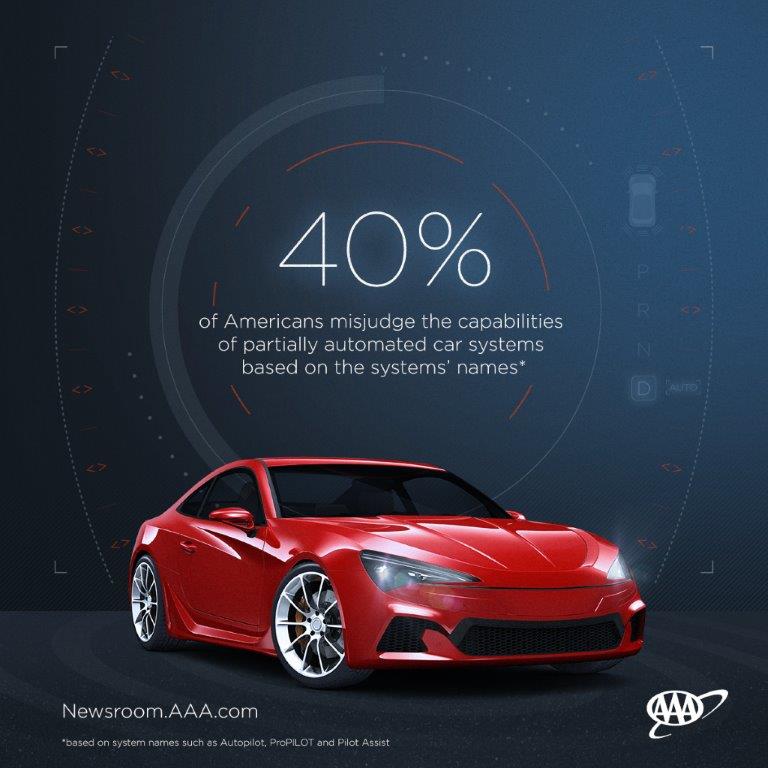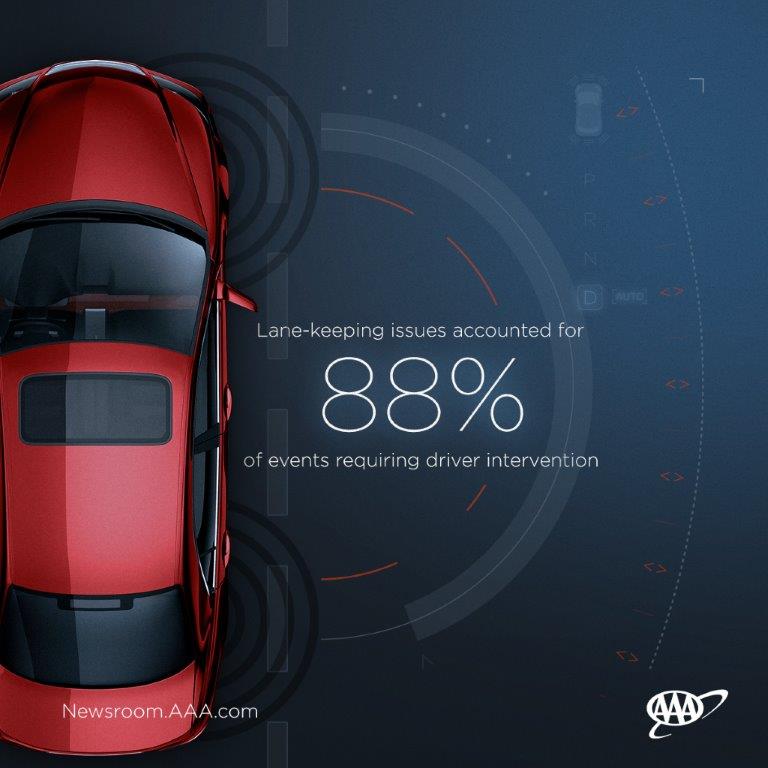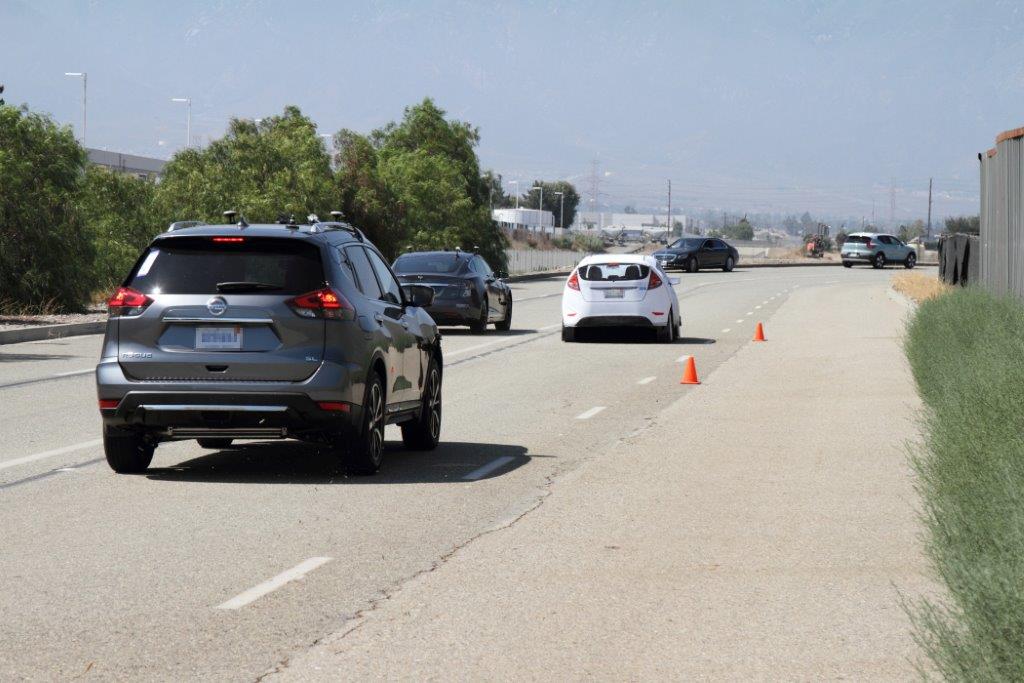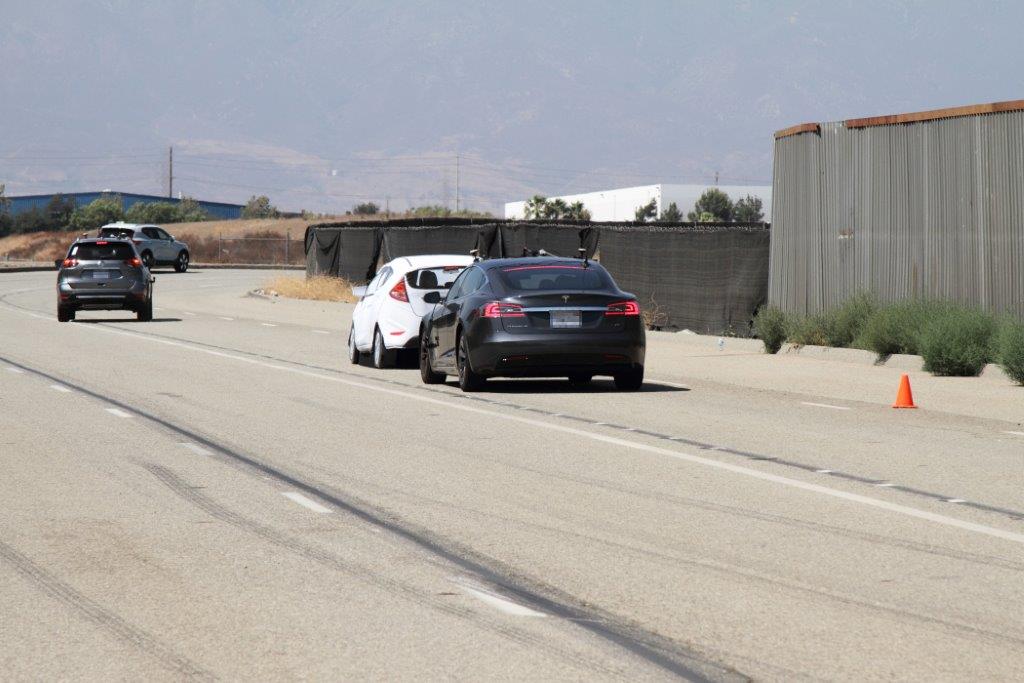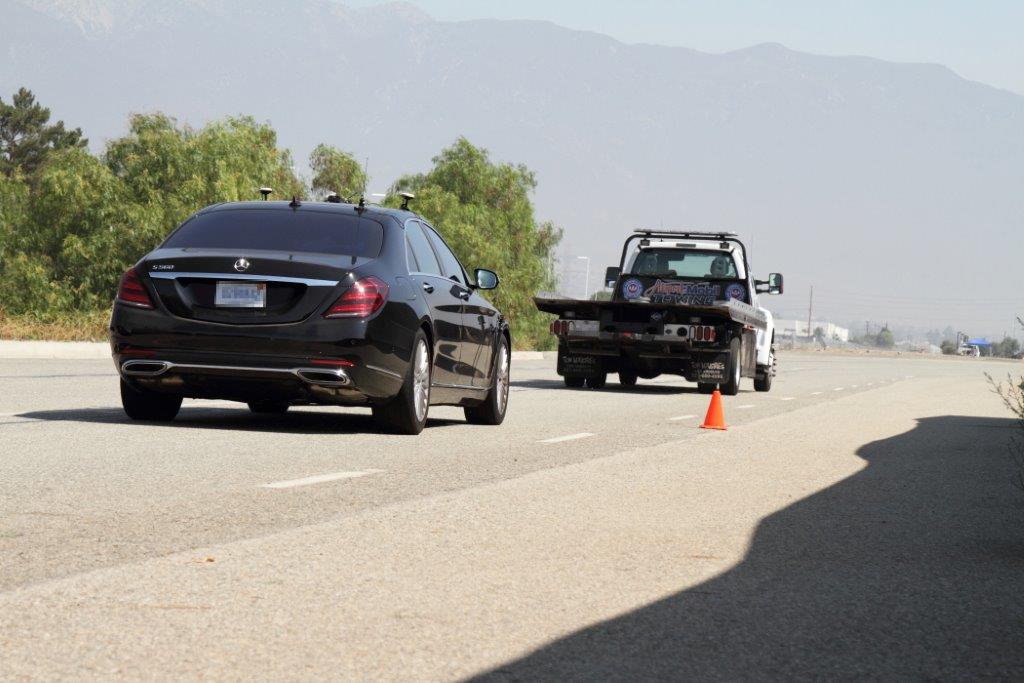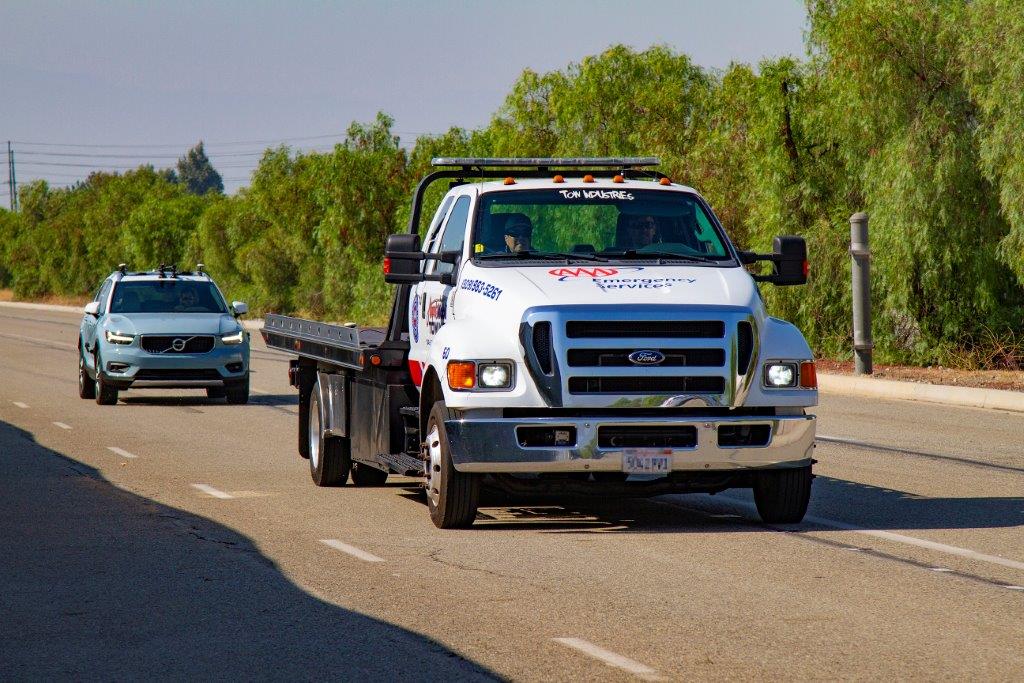New study finds drivers overestimate systems’ capabilities
PORTLAND, Ore., – A new survey from AAA finds that 40 percent of Americans think partially automated driving systems can drive the car by themselves, indicating a gap in consumer understanding of these technologies. With names like Autopilot, ProPILOT or Pilot Assist, it’s implied that these technologies can take over the task of driving. But AAA tested these systems and found that they are not designed to drive the vehicle without human interaction, and they can be significantly challenged by every day conditions such as poor lane markings, unusual traffic patterns and stopped vehicles.
Find more info on the study in the fact sheet.
“Vague or confusing terminology may lead a driver to overestimate a system’s capability, which can put the driver and other road users at risk. AAA says with all of the exciting advances in vehicle technology, these systems need to have names that clearly communicate what they do,” says Marie Dodds, public affairs director for AAA Oregon/Idaho.
“At this point, these systems are designed to assist in the driving task and should never be used as a substitute for driver engagement.”
AAA Research Shows Vehicles Struggled with Every Day Driving Scenarios
In partnership with the Automobile Club of Southern California’s Automotive Research Center, AAA tested four vehicles equipped with systems that combine technologies such as adaptive cruise control and lane keeping assist to help maintain lane position, speed and following distance in relation to a lead vehicle. Closed-course and on-road testing evaluated performance in typical driving situations where the technology generally behaved as expected. However, there were a number of instances in both environments that caused these systems to act in an unpredictable manner, requiring driver intervention to avoid a potential collision.
While driving on public roadways, AAA’s testing found the systems generally performed best on open freeways and freeways with stop and go traffic.
AAA found test vehicles struggled when encountering scenarios that included moderate traffic, curved roadways and streets with busy intersections. Researchers noted many instances where the test vehicle experienced issues like lane departures, hugging lane markers, “ping-ponging” within the lane, inadequate braking, unexpected speed changes and inappropriate following distances.
AAA’s study also revealed that nearly 90 percent of events requiring driver intervention were due to the test vehicle’s inability to maintain lane position. The irregular and complex nature of the real-world driving environment revealed the vulnerabilities of this technology.
During closed-course testing, common driving situations were simulated such as staying within the lane at 45 mph, following a distracted or impaired driver, encountering a commercial vehicle, for example, a tow truck, or contending with a vehicle that suddenly changed lanes to reveal a stationary vehicle. All test vehicles were able to successfully maintain lane position as well as recognize and react to the presence of the tow truck with little to no difficulty. However, in the scenario where a lead vehicle changed lanes to reveal a stationary vehicle, three out of the four test vehicles required driver intervention to avoid an imminent crash. In general, this scenario is a stated limitation of these systems, however, it is a relatively common occurrence on roadways and could take those drivers by surprise who have become too reliant on the technology.
AAA’s advice for drivers and auto makers
If you buy a new car with driver assistance technologies, ask for a demonstration at the dealership, and take some time to actually read the owner’s manual. Understand the technologies your vehicle has and how they’re supposed to work. Realize these systems may not function well in many situations including city surface streets, busy intersections and curvy roads. Most importantly, stay engaged when you’re behind the wheel and maintain control of the vehicle at all times. Don’t assume these systems can drive the car by themselves.
AAA encourages auto makers to standardize the naming of these technologies to more clearly communicate how these technologies function. “It’s still too early to refer to these vehicle technologies as automated. A name such as Autopilot suggests that the car can drive itself, and that’s just not accurate. These technologies do require human interaction,” says Dodds.
About the research:
AAA conducted primary research in partnership with the Automotive Club of Southern California’s Automotive Research Center in Los Angeles, California. Track testing was conducted on closed surface streets on the grounds of Auto Club Speedway in Fontana, California and was rented by AAA for independent testing. Public highway evaluation was conducted on surface streets, highways and limited-access freeways throughout the greater Los Angeles area.
Four test vehicles were selected (2018 Mercedes-Benz S-Class, 2018 Nissan Rogue, 2017 Tesla Model S and 2019 Volvo XC40) using specific criteria and each test vehicle was outfitted using industry‐standard instrumentation, sensors and cameras to capture vehicle dynamics, position data and braking intervention. Complete methodology can be found in the full research report at newsroom.aaa.com.
The consumer survey was conducted October 4–7, 2018, using two probability samples: randomly selected landline telephone and mobile (cell) phone numbers. The combined sample consisted of 1,003 adults (18 years old and older) living in the continental U.S. The margin of error for the study is 4% at the 95% confidence level. Smaller subgroups will have larger error margins.
Since 2014, AAA has evaluated technologies that are considered to be the building blocks toward autonomous vehicles: blind spot monitoring, lane departure warning/lane keep assistance, automatic emergency braking, self-parking, adaptive cruise control and rear cross-traffic alert systems. In an effort to help inform our members, AAA extensively tests and evaluates emerging vehicle technologies, including automated vehicle features. The goal of this testing is to educate drivers on the limitations of these technologies, and provide feedback to the automotive industry.
About AAA:
AAA provides more than 59 million members with automotive, travel, insurance and financial services through its federation of 35 motor clubs and nearly 1,100 branch offices across North America. Since 1902, the not-for-profit, fully tax-paying AAA has been a leader and advocate for safe mobility. Drivers can request roadside assistance, identify nearby gas prices, locate discounts, book a hotel or map a route via the AAA Mobile app. To join, visit AAA.com.
Find current fuel prices at GasPrices.AAA.com.
AAA news releases, high resolution images, broadcast-quality video, fact sheets and podcasts are available on the AAA NewsRoom at NewsRoom.AAA.com.


